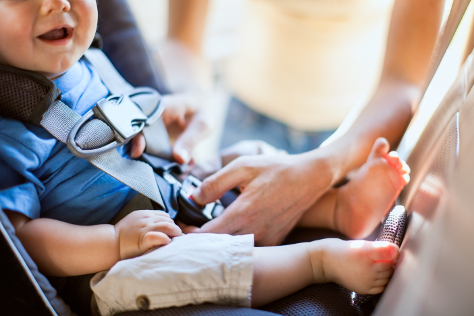All you need to know about rear facing car seats
Want to know where to start when buying a rear facing car seat? Take a look at our top five

The lowdown
In recent years there’s been increased awareness of the benefits of rear-facing travel for babies and young children as research shows they are likely to sustain less serious injuries if travelling rear-facing.
Traditionally rear-facing car seats have only been used up until about a year old – e.g traditional Group 0+ infant carriers.
The i-Size laws make rear-facing mandatory to 15 months to avoid parents using forward-facing seats before 15 months old.
Extended rear-facing car seats are usually suitable from six months or one year old. They are the next seat once your baby has grown out of their first car seat. Extended rear-facing seats allow your little one to remain rearward facing until they reach 18kg, or until they are 105cm for i-Size car seats, both of which are suitable until around four years old.
What about rotating car seats?
This style of extended rear-facing seat can spin 360 degrees once installed in your car.
The spin function means that you can switch the seat easily between rear and forward-facing.
You can also swivel the seat to face the car door to get your child in and out - making life much easier. This style of seat tends to be bulkier and more expensive than other types of car seat but are very user-friendly and extremely safe too.
Why are extended rear-facing car seats safer?
In a front-on crash a child sitting in a forward-facing position will be flung forward away from their seat. If they were facing backwards the same impact would pull them into the seat, where they would be more protected.
Babies have undeveloped neck muscles, which make them more vulnerable to serious injuries as their heads are not properly supported.
Pulled into a rear-facing seat by the impact, a child’s neck and head moves less.
Need to know
Many new extended rear-facing models have come on the market in recent years, some go up to two years, some up to four years old.
Extended rear-facing car seats tend to be more expensive than regular models on the market as they are more highly engineered but prices are slowly coming down.
They are often combination car seats, spanning at least two car seat groups, eg 0+/1.
Extended rear-facing seats can be switched to a forward-facing position when you think the time is right for your child.
Checklist
- Extended rear facing car seats offer rearfacing travel from age 2 and upwards
- In a front-on crash rear-facing seats pull little ones into the seat, where they would be more protected
-
They are often combination seats, spanning at least two car seat groups.